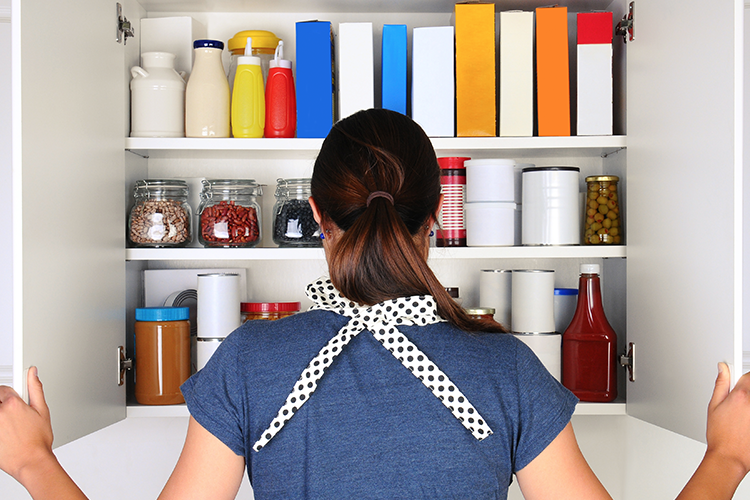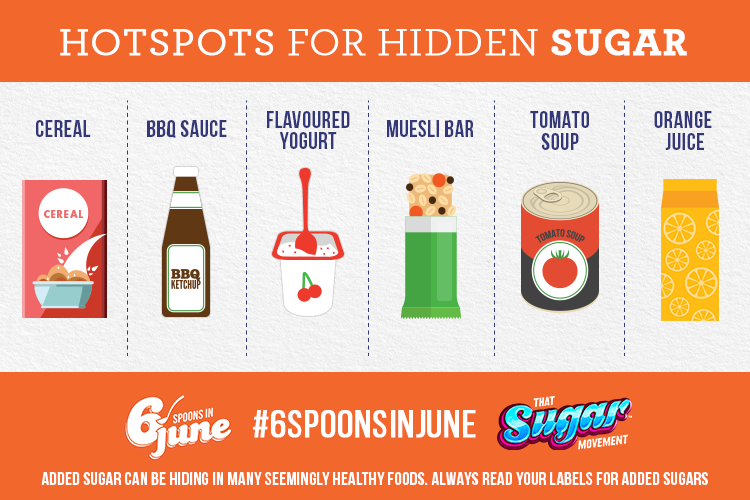Blog
Uncovering sugar: the pantry scour
 Identifying the myriad of names for added sugars, and how to read labels to find them, takes a little practice but worth it once you know what to look for.
Identifying the myriad of names for added sugars, and how to read labels to find them, takes a little practice but worth it once you know what to look for.
As we know, too much of the sweet stuff and we are likely on the road to tooth decay, type 2 diabetes, weight gain, heart disease and more.1-5 Ugh.
What many don’t realise, however, is sugar is added not only to sweet foods but many of our savoury favourites and seemingly healthy foods.
Though one can achieve a balance of flavours with the natural sweetness in whole foods like veg and fruit, pre-made packaged and processed food are often loaded with added sugars and sweeteners.
So, it is time to take a scour of your pantry and check for some of these key culprits for sugary excess with the aim to replace them with low sugar alternatives.
Before we do, let’s be mindful to not be wasteful. If you have some or even all of these products in your cupboard or fridge and they are high in added sugars, slowly replace them over time.
The Pantry (and Fridge) Scour
Cereal
Many cereal boxes have wonderful health claims, even decent Health Star Ratings (though this system is in desperate need for review). But look at the ingredient list for added sugars. Choose those without added sugar like whole oats, and boost nutritional value by sweetening your cereal breakfast bowl with fruit.
Low-fat flavoured yoghurt
These are notorious for having sugars added to make up for the fat removed. Check for sugars or sweeteners, and next time choose unflavoured plain or Greek yoghurt, and DIY flavour with spices or foods like cinnamon, vanilla, banana, mango or berries.
Muesli bars and lunchbox snacks
Considered the healthy staple of the lunchbox, muesli bars rather disappointingly pack a sugary punch. Sometimes more than a chocolate bar. Similarly, fruit rolls, jelly, snack bars, fruit snacks and more are high often in added sugar and not a nutritious source of energy to get us (or our kids) through the day.
Sub these out for sugar-free or low-sugar alternatives, or better yet, make your own snacks! It could be a nut, seed and coconut chip scroggin mix; cheese and carrot sticks; veggie sticks and hummus; or our yummy nutty banana bread bites.
Drinks and juice
Breakfast drinks, flavoured milk and waters, sports drinks, iced teas, and some store bought smoothies offer a massive serve of added sugar. Some juices contain the same, if not more, ‘free’ (a.k.a added) sugars as a soft drink. Yikes! But isn’t juice healthy?
Afraid not.
Fibre and other goodies in whole fruit are removed to make juice. Yet, it’s nutrients like fibre that limit how much we eat and therefore how much sugar we consume in one hit – it is easier to drink the juice of 5 oranges than eating 5! The fibre also slows the absorption of the naturally occurring sugars, releasing these in manageable amounts and lessening the impact on our body.
Next time you want a fruit drink (or soft drink), infuse water or plain soda water with slices of whole fruit and fresh herbs instead. Think apple slices and fresh mint, or lemon slices and berries.
Love a smoothie? Make your own smoothie with our smoothie making guide.
Low-fat mayonnaise and salad dressing
Read the labels and be aware of how much you sugar you are unknowingly pouring over your otherwise super healthy salad.
Instead, seek out low or no added sugar dressings, or make your own! Try olive oil and a squeeze of lemon; a tahini lemon and garlic sauce; or making this simple yet delicious no added sugar aioli!
Sauces, stir-fry and pasta sauces, and soups
Pre-made soups, and pasta and stir-fry sauces can pack in the sweet stuff. As can topping or dipping sauces like tomato, barbeque and sweet chilli. Finding sugar free pre-made sauces mightn’t be easy, but remember, a little added sugar isn’t the end of the world.
Why not make your own tomato sauce or pesto, and cook a big pot of soup from scratch to store in batches in the freezer for a rainy day? The Office Luncheon e-book has some tasty yet simple soup recipes to inspire some time in the kitchen.
Time to scour!
Armed with this knowledge, be empowered to make choices that limit how much added sugar is hiding in food and drink in your home.
Happy pantry scouring!
By Angela Johnson (BHSc Nut. Med.)
References
- Moynihan P, Kelly S. Effect on caries of restricting sugars intake: systematic review to inform WHO guidelines. Journal of Dental Research [Internet]. 2014;93(1):8 – 18. Available from: https://www.ncbi.nlm.nih.gov/pubmed/24323509
- Imamura F, O’Connor L, Ye Z, Mursu J, Hayashino Y, Bhupathiraju S et al. Consumption of sugar sweetened beverages, artificially sweetened beverages, and fruit juice and incidence of type 2 diabetes: systematic review, metaanalysis, and estimation of population attributable fraction [Internet]. 2015. Available from: http://www.bmj.com/content/351/bmj.h3576
- Basu S, Yoffe P, Hills N, Lustig R. The relationship of sugar to population-level diabetes prevalence: an econometric analysis of repeated cross-sectional data. PLoS ONE [Internet]. 2013;8(2). Available from: https://www.ncbi.nlm.nih.gov/pubmed/23460912
- Te Morenga L, Mallard S, Mann J. Dietary sugars and body weight: systematic review and meta-analyses of randomised controlled trials and cohort studies [Internet]. 2013. Available from: http://www.bmj.com/content/346/bmj.e7492
- Yang Q, Zhang Z, Gregg E, Flanders W, Merritt R, Hu F. Added sugar intake and cardiovascular diseases mortality among US adults. JAMA Internal Medicine [Internet]. 2014;174(4):516-524. Available from: https://www.ncbi.nlm.nih.gov/pubmed/24493081












